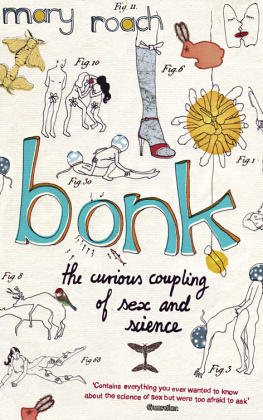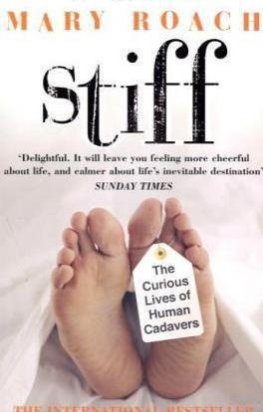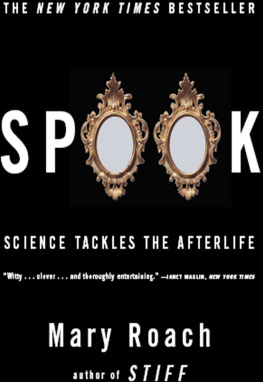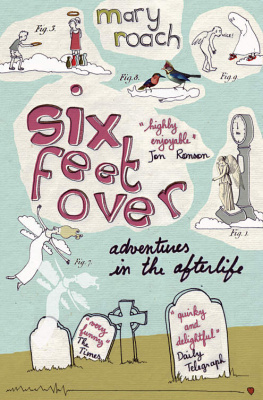a man sits in a room, manipulating his kneecaps. It is 1983, on the campus of the University of California, Los Angeles. The man, a study subject, has been told to do this for four minutes, stop, and then resume for a minute more. Then he can put his pants back on, collect his payment, and go home with an entertaining story to tell at suppertime. The study concerns human sexual response. Kneecap manipulation elicits no sexual response, on this planet anyway, and that is why the man is doing it: Its the control activity. (Earlier, the man was told to manipulate the more usual suspect while the researchers measured whatever it was they were measuring.)
I came upon this study while procrastinating in a medical school library some years ago. It had never really occurred to me, before that moment, that sex has been studied in labs, just like sleep or digestion or exfoliation or any other pocket of human physiology. I guess I had known it; Id just never given it much thought. Id never thought about what it must be like, the hurdles and the hassles that the researchers facedraised eyebrows, suspicious wives, gossiping colleagues. Imagine a janitor or a freshman or the president of UCLA opening the door on the kneecap scene without knocking. Requesting that a study subject twiddle his knees is not immoral or indecent, but it is very hard to explain. And even harder to fund. Who sponsors these studies, I wondered. Who volunteers for them?
Its not surprising that the study of sexual physiology, with a few notable exceptions, did not get rolling in earnest until the 1970s. William Masters and Virginia Johnson said of their field in the late 1950s, science and scientist continue to be governed by fearfear of public opinion, fear of religious intolerance, fear of political pressure, and, above all, fear of bigotry and prejudiceas much within as without the professional world. (And then they said, Oh, what the hell, and built a penis-camera.) The retired British sex physiologist Roy Levin told me that the index of his edition of Essential Medical Physiology, a popular textbook in the sixties, had no entry for penis, vagina, coitus, erection, or ejaculation. Physiology courses skipped orgasm and arousal, as though sex were a secret shame and not an everyday biological event.
One of Levins earliest projects was to profile the chemical properties of vaginal secretions, the only bodily fluid about which virtually nothing was known. The female moistnesses are the first thing sperm encounter upon touchdown, and so, from a fertility perspective alone, it was an important thing to know. This seemed obvious to him, but not to some of his colleagues in physiology. Levin can recall overhearing a pair of them sniping about him at the urinals during the conference where he presented his paper. The unspoken assumption was that he was somehow deriving an illicit thrill from calculating the ion concentrations of vaginal fluids. That people study sex because they are perverts.
Or, at the very least, because they harbor an unseemly interest in the matter. Which makes some people wary of sex researchers and other people extremely interested. People invariably draw all these conclusions about me, about why Im studying this, says researcher Cindy Meston of the University of Texas at Austin. That Meston is blond and beautiful compounds the problem. If you are sitting next to Cindy Meston on a plane and you ask her what she does, she will either lie to you or she will say, I do psychophysiological research. She loses most of them there. If they persist, I say something like, Well, we use various visual and auditory stimuli to look at autonomic nervous system reactivity in various contexts. That usually does the trick.
Even when a researcher carefully explains a sex-related projectits purpose and its valuepeople may still suspect he or she is a perv. Last year, I was conversing by e-mail with an acquaintance who was investigating the black market in cadaver parts. She came into possession of a sales list for a company that provides organs and tissues for research. On the list was vagina with clitoris. She did not believe that there could be a legitimate research purpose for cadaver genitalia. She assumed the researcher had procured the part to have sex with it. I replied that physiologists and people who study sexual dysfunction still have plenty to learn about female arousal and orgasm, and that I could, with little trouble, imagine someone needing such a thing. Besides, I said to this woman, if the guy wanted to nail the thing, do you honestly think hed have bothered with the clitoris?
Early studies of sexual physiology came at it sideways, via studies of fertility, obstetrics and gynecology, and venereal disease. Even working in these areas tended to invite scorn and suspicion. Gynecologist James Platt White was expelled from the American Medical Association in 1851 In 1875, a gynecologist named Emo Nograth was booed while delivering a talk on venereal disease at the newly formed American Gynecological Society. The sex researcher and historian Vern Bullough, in the 1970s, landed on an FBI list of dangerous Americans for his subversive activities (e. g., publishing scholarly papers about prostitution and working for the American Civil Liberties Union to decriminalize, among other things, oral sex and the wearing of dresses by men).
It wasnt until the past half century that lab-based science embraced the pursuit of better, more satisfying sex. Sexual dysfunction had to be medicalized, and the pharmaceutical companies had to get interested. Its still an uphill slog. The current conservative political climate has made funding scarce. Meston plans to seek funding to research fertilitya subject thats easy to fund but does not interest hersimply to help keep her lab afloat. Several researchers told me they keep the titles of their grant proposals intentionally vague, using the word physiological, for example, in place of sexual.
This book is a tribute to the men and women who dared. Who, to this day, endure ignorance, closed minds, righteousness, and prudery. Their lives are not easy. But their cocktail parties are the best.
p eople who write popular books about sex endure a milder if no less inevitable scrutiny. My first book was about human cadavers, and as a result, people assumed that Im obsessed with death. Now that I have written books about both sex and death, God only knows what the word on the street is.
I am obsessed with my research, not by nature but serially: book by book and regardless of topic. All good researchwhether for science or for a bookis a form of obsession. And obsession can be awkward. It can be downright embarrassing. I have no doubt that Im a running joke at the interlibrary loan department of the San Francisco Public Library, where I have requested, over the past two years, papers with titles like On the Function of Groaning and Hyperventilation During Intercourse and An Anal Probe for Monitoring Vascular and Muscular Events During Sexual Response. Last summer, I was in a medical school library xeroxing a journal article called Vacuum Cleaner Use in Autoerotic Death when the paper jammed. I could not bring myself to ask the copy room attendant to help me, but quietly moved over to the adjacent machine and began again.















